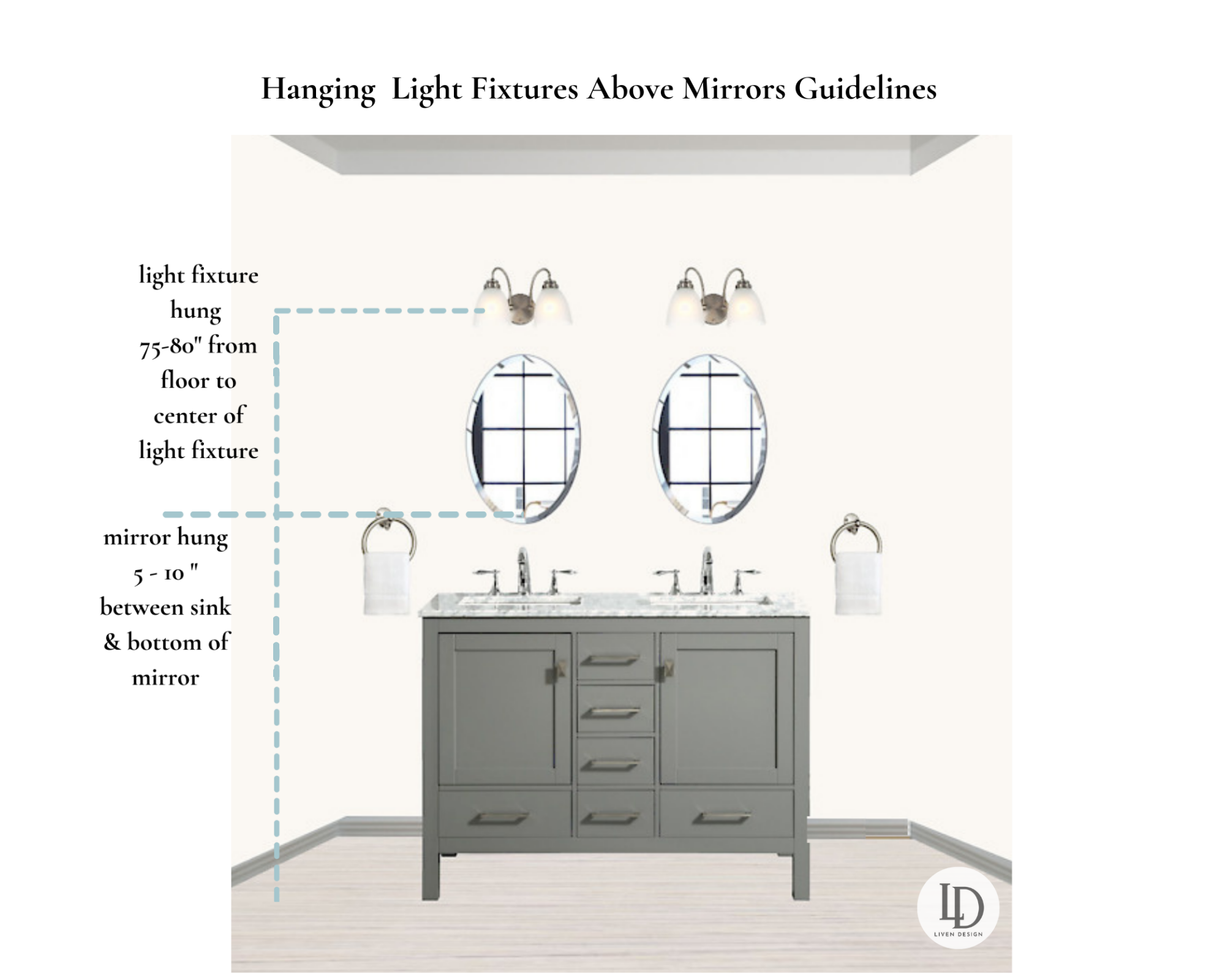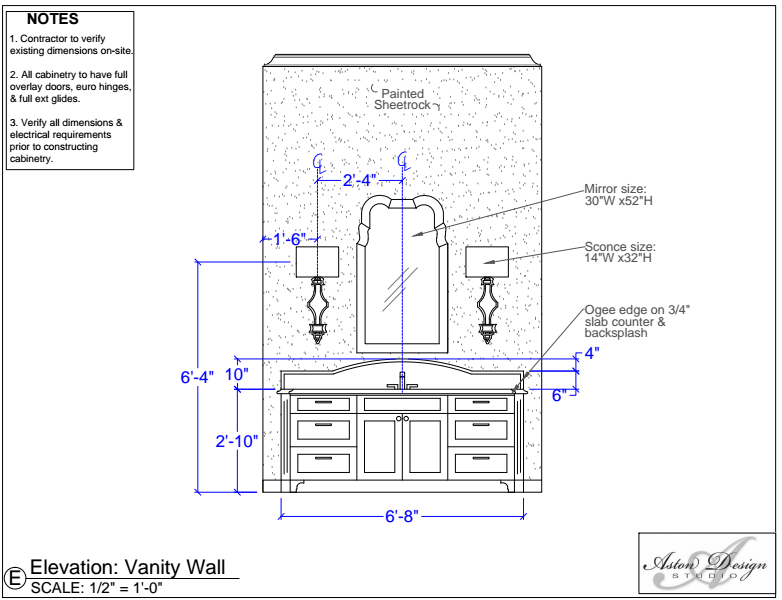Ideal Medicine Cabinet Height Above Vanity

The height of a medicine cabinet above a vanity is a crucial factor in its usability and accessibility. A well-placed medicine cabinet should be within easy reach for all members of the household, regardless of their height or mobility. This ensures safe and convenient access to medications and personal care items.
Standard Height Recommendations
The standard height recommendation for medicine cabinets above vanities is between 55 and 65 inches from the floor. This range is considered optimal for most adults, ensuring that the cabinet is within comfortable reach without excessive stretching or bending. However, it’s important to consider individual factors like height and mobility when determining the ideal placement.
Height Considerations for Different User Demographics
- Elderly Individuals: For elderly individuals, it’s recommended to install the medicine cabinet lower, between 48 and 55 inches from the floor. This allows for easier access without straining or reaching.
- Children: Children, especially younger ones, may require a lower cabinet height, around 42 to 48 inches. This allows them to access their own personal care items safely and independently.
- People with Mobility Limitations: Individuals with mobility limitations may benefit from a lower cabinet height, ideally within their reach while seated. Consider installing the cabinet at a height that accommodates their wheelchair or walker.
Design Recommendations for Optimal Visibility and Accessibility
- Mirrored Doors: Mirrored doors provide a convenient way to check your appearance while accessing the cabinet’s contents.
- Shelving and Storage: Use adjustable shelves to accommodate items of varying sizes and heights. Consider installing a small mirror inside the cabinet for easier visibility of items stored at the back.
- Lighting: Install a light inside the cabinet for better visibility, especially in dimly lit bathrooms.
Common Medicine Cabinet Heights and Their Corresponding Advantages and Disadvantages
| Height (Inches) | Advantages | Disadvantages |
|---|---|---|
| 48-55 | Accessible for most individuals, including those with limited mobility. | May be too low for taller individuals. |
| 55-65 | Optimal height for most adults, providing easy access without excessive stretching. | May be too high for shorter individuals or those with limited reach. |
| 65-75 | Provides ample space above the vanity for other fixtures. | May be too high for most individuals to reach comfortably. |
Factors Influencing Medicine Cabinet Placement

The ideal placement of a medicine cabinet above a vanity is influenced by several factors that contribute to functionality, aesthetics, and accessibility. Understanding these factors helps ensure the medicine cabinet seamlessly integrates with the bathroom layout, vanity size, plumbing fixtures, and overall design.
Bathroom Layout
The bathroom layout plays a crucial role in determining the best location for the medicine cabinet. It’s essential to consider the flow of movement within the bathroom, the proximity of other fixtures, and the available wall space. For instance, placing the medicine cabinet directly above the vanity is ideal if the bathroom has ample space and the vanity is centrally located. However, in smaller bathrooms, it may be necessary to consider alternative placement options, such as on a side wall or above the toilet.
Vanity Size
The size of the vanity directly impacts the placement of the medicine cabinet. A larger vanity provides more flexibility in terms of positioning the cabinet. It’s essential to ensure the medicine cabinet is appropriately sized to avoid crowding the vanity and hindering access to other fixtures. For instance, a small vanity may require a smaller medicine cabinet or a vertical cabinet to maximize space.
Plumbing Fixtures
The placement of plumbing fixtures, such as faucets, towel bars, and showerheads, must be considered when deciding on the medicine cabinet location. It’s crucial to avoid placing the cabinet directly above or near plumbing fixtures, as this can obstruct their use and potentially cause damage. Additionally, ensure the cabinet’s size and shape allow for sufficient clearance around these fixtures.
Lighting
Lighting plays a significant role in the functionality and aesthetics of a medicine cabinet. The placement of the medicine cabinet should be carefully considered to optimize illumination. Ideally, the cabinet should be positioned to receive sufficient natural light, but if natural light is limited, consider installing additional lighting fixtures, such as sconces or vanity lights, to ensure adequate illumination.
Bathroom Design, Medicine cabinet height above vanity
The overall design of the bathroom influences the medicine cabinet’s placement. The style of the vanity, the color scheme, and the overall aesthetic should be considered when selecting the medicine cabinet’s style and size. For instance, a modern bathroom might benefit from a sleek, minimalist medicine cabinet, while a traditional bathroom may be better suited to a more ornate cabinet.
Examples of Bathroom Designs
Modern Bathroom
A modern bathroom with a minimalist design might feature a sleek, rectangular vanity with a large mirror and a small, rectangular medicine cabinet placed directly above the vanity. The cabinet’s simple lines and clean design complement the overall aesthetic of the bathroom.
Traditional Bathroom
A traditional bathroom might feature a more ornate vanity with a large, oval mirror and a larger, rectangular medicine cabinet placed above the vanity. The cabinet’s intricate detailing and traditional style complement the overall design of the bathroom.
Small Bathroom
A small bathroom may require a more creative approach to medicine cabinet placement. A vertical medicine cabinet placed on a side wall can help maximize space while providing ample storage. Alternatively, a small, rectangular medicine cabinet placed above the toilet can also be a practical solution.
Medicine Cabinet Design and Functionality

The design and functionality of a medicine cabinet are essential factors to consider when choosing one for your bathroom. They come in various styles, materials, and features, each offering distinct advantages and disadvantages. By carefully considering your needs and preferences, you can select a medicine cabinet that enhances your bathroom’s aesthetics and functionality.
Medicine Cabinet Designs
Medicine cabinets are available in various designs to suit different bathroom styles and preferences. Here are some popular options:
- Mirrored Medicine Cabinets: These cabinets are the most common type, offering both storage and a mirror. They are available in various sizes and shapes, making them suitable for different bathroom layouts. The mirrored surface can help create an illusion of space, making a small bathroom appear larger. However, mirrored cabinets can be more prone to smudges and fingerprints, requiring regular cleaning.
- Recessed Medicine Cabinets: Recessed cabinets are installed directly into the wall, creating a seamless and integrated look. They are ideal for maximizing space and minimizing clutter. However, installation can be more complex and may require professional assistance. Additionally, recessed cabinets can be difficult to access for cleaning and maintenance.
- Surface-Mounted Medicine Cabinets: These cabinets are mounted on the wall’s surface, offering a convenient and easy installation process. They are available in various styles and finishes to match any bathroom decor. However, surface-mounted cabinets can protrude from the wall, taking up valuable space, and may not be suitable for all bathroom layouts.
Medicine Cabinet Materials
The material of a medicine cabinet can significantly impact its durability, aesthetics, and cost. Common materials include:
- Wood: Wooden medicine cabinets offer a classic and elegant look. They are durable and can be stained or painted to match any bathroom decor. However, wood can be susceptible to moisture damage, requiring proper sealing and maintenance.
- Metal: Metal medicine cabinets are known for their durability and resistance to moisture. They are often available in chrome, nickel, or stainless steel finishes, adding a modern touch to the bathroom. However, metal cabinets can be prone to scratches and dents, and some finishes may require regular cleaning to maintain their shine.
- Glass: Glass medicine cabinets offer a sleek and modern look. They are easy to clean and maintain, but they can be prone to breakage. Glass cabinets are often used in contemporary bathroom designs, adding a touch of elegance and sophistication.
Medicine Cabinet Features
Modern medicine cabinets are equipped with innovative features that enhance their functionality and convenience:
- Built-in Lighting: Some medicine cabinets have built-in lighting, providing ample illumination for applying makeup or shaving. This feature eliminates the need for additional lighting fixtures, creating a more streamlined and efficient bathroom environment.
- Adjustable Shelves: Adjustable shelves allow you to customize the cabinet’s interior to accommodate various items. This feature provides flexibility and helps maximize storage space, allowing you to organize your bathroom essentials efficiently.
- Integrated Organizers: Some medicine cabinets come with integrated organizers, such as trays, baskets, or drawers. These organizers help separate and compartmentalize your items, keeping them neat and easily accessible.
Comparison of Medicine Cabinet Designs and Features
| Feature | Mirrored Cabinet | Recessed Cabinet | Surface-Mounted Cabinet |
|---|---|---|---|
| Design | Classic and versatile | Sleek and integrated | Convenient and easy to install |
| Space Optimization | Moderate | Excellent | Moderate |
| Installation Complexity | Easy | Complex | Easy |
| Maintenance | Moderate | Difficult | Easy |
| Cost | Moderate | High | Moderate |
Medicine cabinet height above vanity – The ideal height for a medicine cabinet above a vanity is a matter of personal preference and accessibility. However, a good rule of thumb is to place the bottom of the cabinet at least 60 inches from the floor. This ensures that it’s easily reachable for most people.
If you’re looking for additional storage, consider a tall slim white gloss bathroom cabinet that can be placed alongside the vanity, providing ample space for toiletries and other essentials. This type of cabinet can also be used to add a touch of style to your bathroom décor.
Ultimately, the best approach is to consider your own needs and preferences when determining the ideal height for your medicine cabinet and additional storage solutions.
The optimal height for a medicine cabinet above a vanity is a matter of personal preference and accessibility. While some prefer a lower placement for easy reach, others prioritize a higher position to avoid clutter. Similar considerations apply when choosing a solid pine pantry cabinet , with factors like frequency of use and available space playing a crucial role in determining the ideal height.
Ultimately, the key is to find a balance between practicality and aesthetics, ensuring both the medicine cabinet and pantry cabinet are easily accessible and visually appealing.
